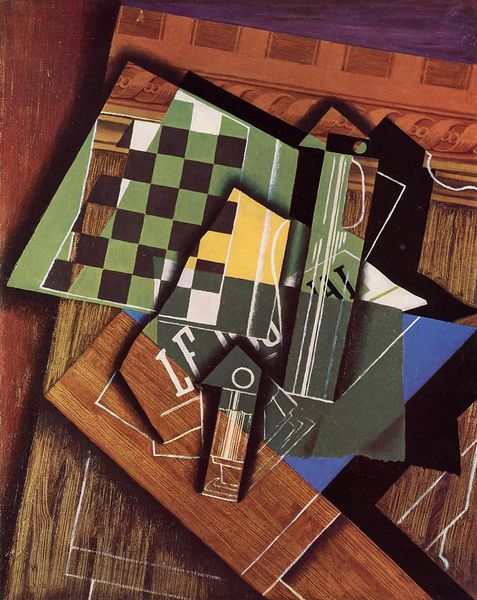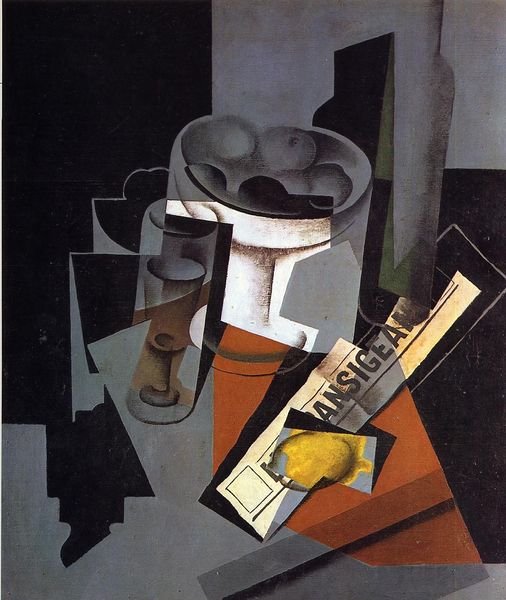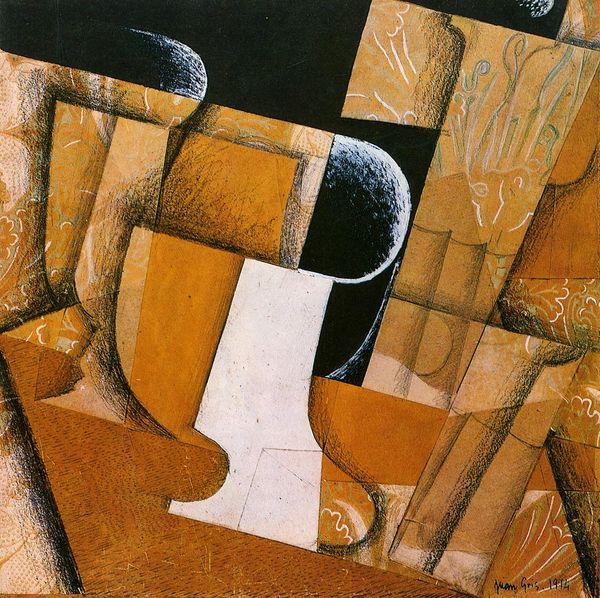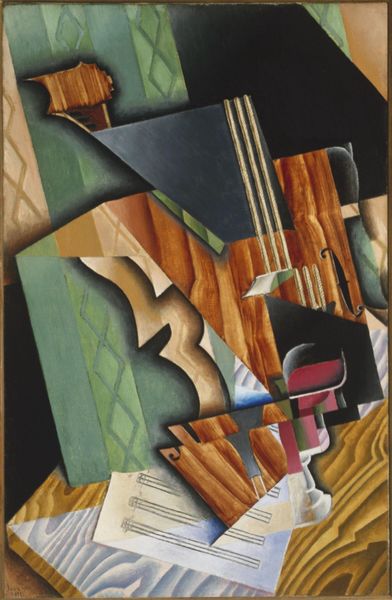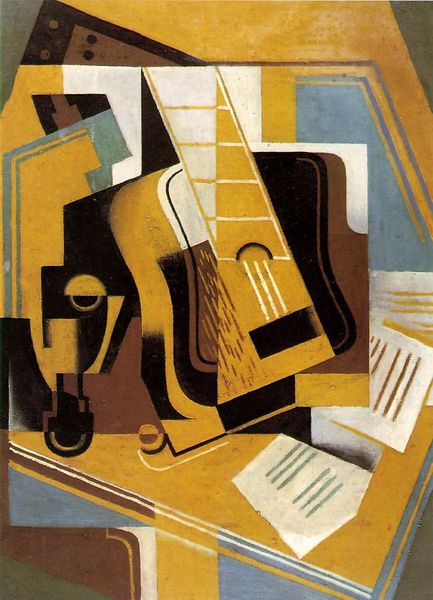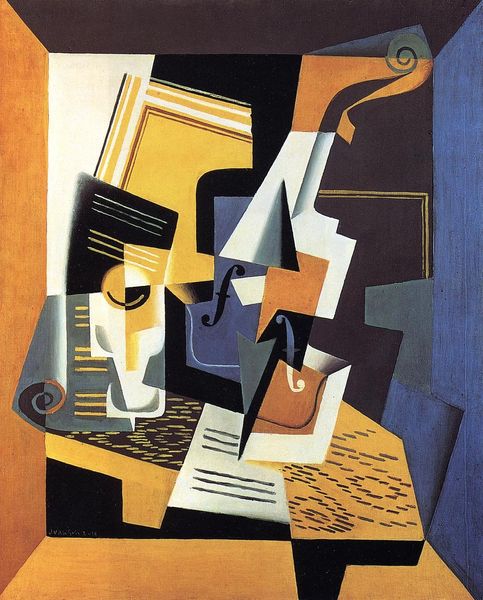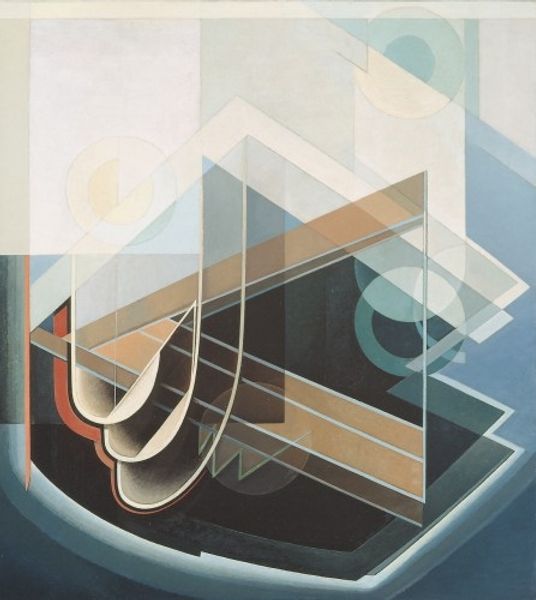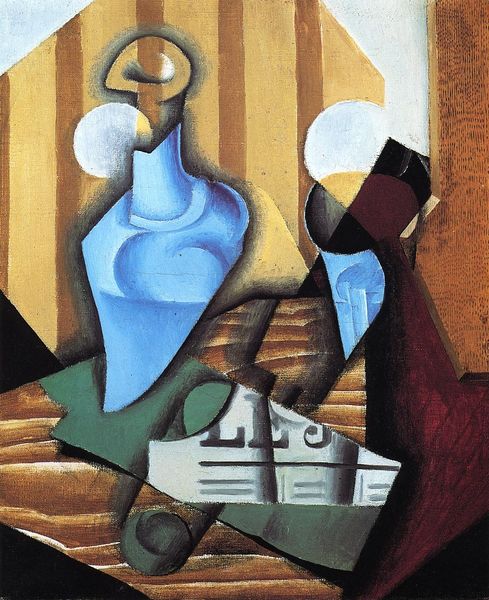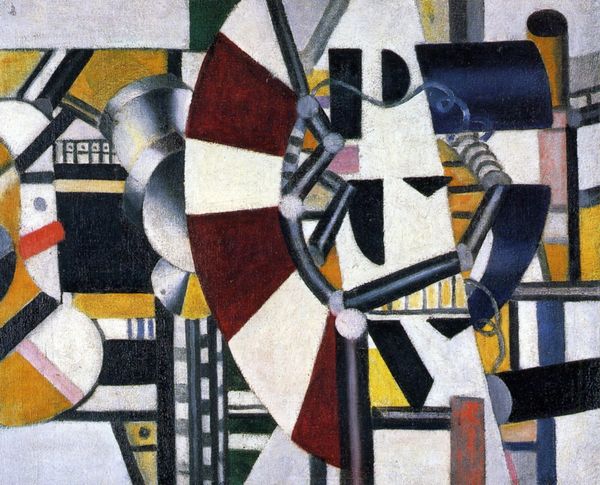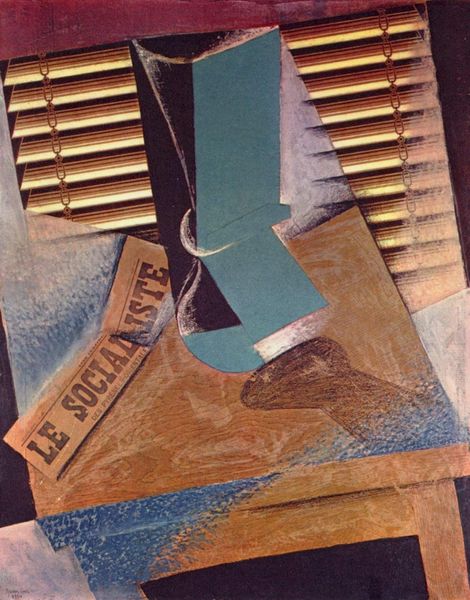
#
cyberpunk
#
graffiti art
#
street art
#
industrial style architectural design
#
spray can art
#
industrial style
#
urban art
#
glass architecture house
#
3d art
#
urban living
Copyright: Public domain
Curator: Juan Gris's "Book, Pipe and Glasses," presents a fascinating example of synthetic cubism, although we don’t have an exact date for its creation. What are your initial thoughts? Editor: It feels...contained. Deliberately so. All these geometric planes locking into each other, creating a sense of solidity despite the fractured representation. Is it me or it feels like a study in how light and shadow define objects, breaking down how we perceive depth and form? Curator: Precisely. Notice how Gris uses overlapping planes to build the composition, rather than relying on traditional perspective. The flattening effect is intentional, challenging the viewer's spatial understanding. Editor: This prompts me to think about its time. Early 20th century! Were artists struggling to represent the rapid changes in society after the industrial revolution? Was this painting their answer: to disassemble it so they can put it back together in order to give sense to it all? Curator: One might indeed examine Gris's method in terms of cultural change and even instability in social orders. However, I read Gris's method through a more formalist lens. He sought to dismantle conventional representation in order to emphasize the inherent structure and essence of these objects. Editor: It feels that he does that, for instance, with that gorgeous wood texture that seems to have depth, but also not quite... Curator: Indeed. The book, the pipe, the glasses are all dissected and reassembled, demanding that the viewer actively reconstruct them. It becomes less about depicting objects as we see them and more about conveying their underlying structure, their essential forms. The artist challenges you to really question, examine and deconstruct your reality. Editor: The question is, whose reality? While one could argue for the universal essence of form, surely personal context cannot be extracted completely from any cultural object. So I keep wondering: What were people reading? Where were people smoking their pipes? Who were they looking at with those glasses? The real, non essential things as you would call them… Curator: Those, dear friend, are precisely the things I attempt to avoid. Still, your cultural perspective illuminates the work for wider audiences, I concede. Editor: And your perspective keeps my analysis grounded. It's in those contrasts that art starts talking back, isn't it? Curator: It is indeed. Thank you for offering me fresh new lenses!
Comments
No comments
Be the first to comment and join the conversation on the ultimate creative platform.
